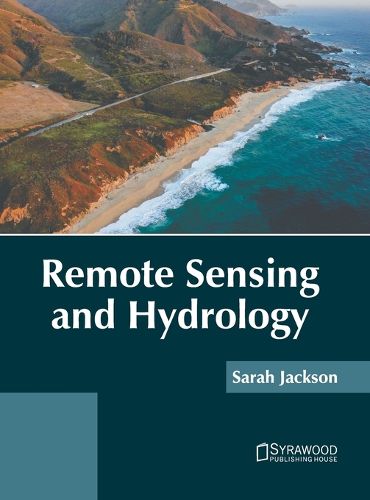Readings Newsletter
Become a Readings Member to make your shopping experience even easier.
Sign in or sign up for free!
You’re not far away from qualifying for FREE standard shipping within Australia
You’ve qualified for FREE standard shipping within Australia
The cart is loading…






Remote sensing refers to a process involving the identification and observation of the topographies of a region by measuring its reflected and emitted radiation from a distance. It involves gathering information about objects or regions from distant objects such as aircrafts, satellites and drones. It is commonly used for gathering information about the Earth's surface from space. Weather forecasting, natural disaster research, land-use mapping, resource exploration, and environmental research are some of the prominent applications of remote sensing. One of the significant applications of remote sensing is in hydrology, where it can be used for measuring several hydrological variables over a region repeatedly. The hydrological variables measured by remote sensing include surface temperature, snow water equivalent, surface soil moisture, snow covered area and land cover. This book is a valuable compilation of topics, ranging from the basic to the most complex studies on the role of remote sensing in hydrology. Scientists and students actively engaged in this field will find it full of crucial and unexplored concepts.
$9.00 standard shipping within Australia
FREE standard shipping within Australia for orders over $100.00
Express & International shipping calculated at checkout
Remote sensing refers to a process involving the identification and observation of the topographies of a region by measuring its reflected and emitted radiation from a distance. It involves gathering information about objects or regions from distant objects such as aircrafts, satellites and drones. It is commonly used for gathering information about the Earth's surface from space. Weather forecasting, natural disaster research, land-use mapping, resource exploration, and environmental research are some of the prominent applications of remote sensing. One of the significant applications of remote sensing is in hydrology, where it can be used for measuring several hydrological variables over a region repeatedly. The hydrological variables measured by remote sensing include surface temperature, snow water equivalent, surface soil moisture, snow covered area and land cover. This book is a valuable compilation of topics, ranging from the basic to the most complex studies on the role of remote sensing in hydrology. Scientists and students actively engaged in this field will find it full of crucial and unexplored concepts.